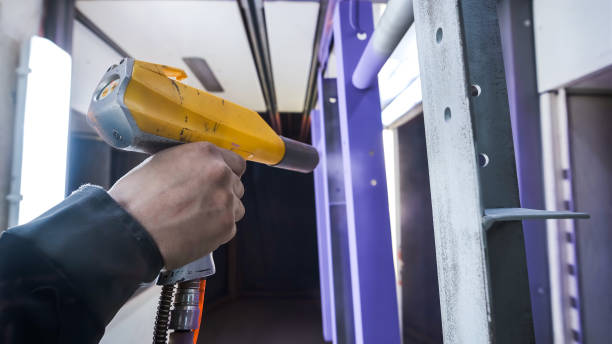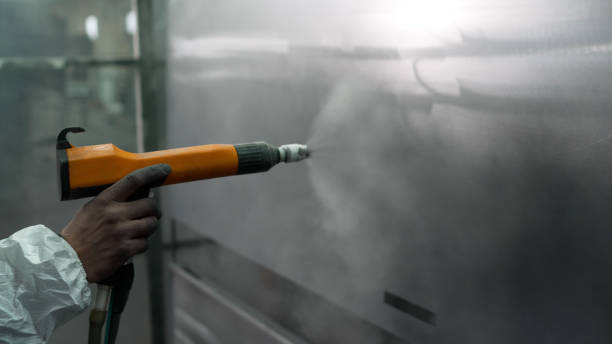Powder Coating Gun Myths Every Finisher Should Know
In every finishing shop, there are stories passed around about how to get the “perfect coat.” Some of them are true—but many are half-truths or outright myths that quietly eat away at your results. Powder coating gun, in particular, is surrounded by assumptions that sound convincing at first, but ends up costing quality, efficiency, and even money.
The tricky part is that these myths don’t always come from beginners. They often come from years of habit, quick fixes on the shop floor, or advice that worked once but doesn’t hold up across different jobs. And when everyone is under pressure to keep production moving, it’s easy to rely on what “seems” to work instead of what really delivers consistent, durable coatings.
That’s why it’s worth taking a step back. By breaking down a few of the most common misconceptions about powder coating guns, we can uncover the truth—and more importantly, help to achieve better results without unnecessary waste or frustration.
Misconception 1: Any Powder Coating Gun Will Do the Job
At first glance, a powder coating gun might look like a fairly simple tool—point, spray, and cure. Because of that, many finishers assume that “a gun is a gun,” and any model will get the job done as long as the powder sticks to the part. But the reality is much different.
The design and build quality of a powder coating gun have a direct impact on how efficiently the powder is transferred, how evenly it coats, and how much material is wasted. Entry-level or poorly engineered guns often suffer from inconsistent spray patterns, unstable charging, and higher levels of overspray. The result? More rework, more wasted powder, and finishes that don’t meet the expectations. On the other hand, advanced powder coating guns are built with precision nozzles, stable electrostatic systems, and better controls. These features may sound technical, but they translate into very practical benefits on the shop floor—less waste, more consistent film thickness, and a smoother finish. For operations that care about cost savings and reputation, the right gun is not just a tool; it’s the difference between a coating that barely passes and one that stands out.


Misconception 2: More Voltage Means Better Coverage
It’s a common scene on the shop floor: when the powder doesn’t seem to be covering well, someone suggests cranking up the voltage. The idea sounds logical—more charge should pull more powder to the part, right? But in practice, higher voltage doesn’t always equal better coverage. In fact, it can often make things worse.
When a powder coating gun is set to excessively high voltage, the particles become overcharged. Instead of settling smoothly, they can repel each other or bounce off the surface, leading to a phenomenon called back ionization. You’ve probably seen the signs—an uneven finish, orange peel effect, or thin spots where powder simply refuses to stick.
The truth is, powder coating works best within a balanced voltage range. The right setting depends on the part’s geometry, the type of powder being used, and even the speed of application. Sometimes, lowering the voltage allows for softer, more even coverage—especially on edges, corners, or recessed areas that are otherwise tricky to coat. Finishing isn’t about pushing the gun to its limits; it’s about control. By understanding how voltage really influences particle behavior, finishers can tune their powder coating gun to achieve uniform, durable coatings without wasting time or material.
Misconception 3: All Powders Spray the Same
It’s easy to think of powder as just “powder.” After all, once it’s in the hopper and moving through the powder coating gun, it should behave the same way—at least, that’s the assumption many finishers make. But the truth is, not all powders are created equal, and treating them as if they are can lead to major inconsistencies in the finish.
Different powders vary in particle size, chemical composition, and flow properties. A fine, free-flowing polyester powder will move through a gun very differently than a heavier epoxy blend. Some powders require more precise air settings, while others need careful adjustment of voltage to avoid clumping or poor adhesion. If those adjustments aren’t made, the results can range from uneven film thickness to defects that only show up after curing.
This is where the operator’s knowledge really comes into play. Understanding the type of powder being used—and knowing how to fine-tune the powder coating gun for it—makes the difference between a smooth, consistent finish and a job that ends up in the rework pile. Instead of assuming all powders behave the same, finishers who adapt their settings unlock better efficiency, less waste, and a much higher level of quality.

